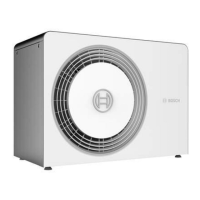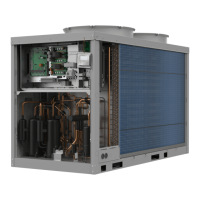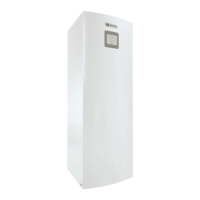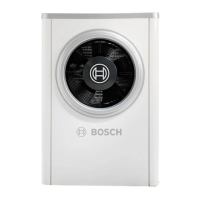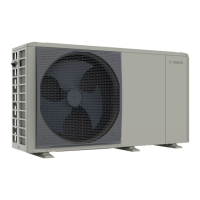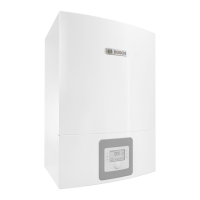Installation
9
AWE – 6721835317 (2021/09)
5.4 Connection
5.4.1 Connecting the indoor unit to the heat pump and the
heating system
NOTICE
Residue in the pipework can damage the system.
Solids, metal/plastic filings, flux and thread tape residue and similar
material can get stuck in pumps, valves and heat exchangers.
▶ Keep foreign bodies from entering the pipework.
▶ Do not leave pipe parts and connections directly on the ground.
▶ When deburring, make sure that no residue remains in the pipe.
▶ Before connecting the heat pump and indoor unit, rinse the pipe
system to remove any foreign bodies.
NOTICE
Material damage from frost!
In case of a power outage the water in the pipes may freeze.
▶ Use insulation with a thickness of at least 19 mm for pipework
outdoors.
▶ In buildings, use insulation with a thickness of at least 12 mm for
pipework. This is also important for safe and efficient DHW mode.
All heat-conducting pipework must be provided with suitable thermal
insulation according to applicable regulations.
In cooling mode, all connections and lines must be insulated according to
applicable standards to prevent condensation.
▶ Route a leakage water hose downwards to a frost-free drain.
▶ Size pipework as specified in the installation instructions for the heat
pump.
▶ Connect the piping from the heat pump to the heat transfer medium
inlet.
▶ Connect the piping to the heat pump at the heat transfer medium
outlet.
▶ Connect the return from the heating system.
▶ Connect the flow to the heating system.
Fig. 6 Connection of the indoor unit with electric booster heater to the heat pump and heating system
[1] Heat transfer medium inlet (primary) from the heat pump
[2] Heat transfer medium outlet (primary) to the heat pump
[3] Flow from the heat pump
[4] Return to the heat pump
[5] Flow to the heating system
[6] Overpressure discharge from the pressure relief valve
[7] Return from the heating system
[8] Particle filter
T T
<50V 230V
/
400V
6
7
5
1
8
2
3
4
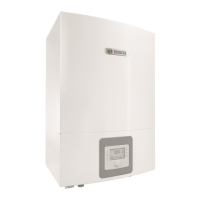
